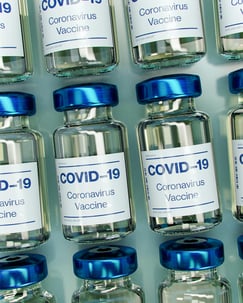Updates About COVID-19
Join Our Movement
What started as an idea has become a national movement. With your support, we can influence policy and inspire lasting change.
Become an Advocate
After socially isolating for over a year, it can be sort of scary to think about going back into the community. I know it is for me. When I go for a drive, I see people eating outside at restaurants and think, why can't that be me? But I know I am immunocompromised and taking even the chance can be disastrous for my health. Before the pandemic, it was not an issue but now, with COVID, being with others is a very serious decision.
After you are fully vaccinated against COVID-19, there is a two-week time period needed for your body to build immunity. This is two weeks from your second vaccination in a two-step series and two weeks after your one-step vaccination. There is some gathering evidence that you will have an even better response after a month.
It is very tempting to think once you are vaccinated to go out and about as we all did prior to the start of the pandemic. However, there is another issue to consider. Even though you have your vaccination, the COVID-19 virus AND all of its variants are still in the world. The vaccine protects you, but like all viruses, they can always be present once they are in the environment. Eventually, as long as people follow safety rules and get vaccinated, we will be safe. But just like other viruses, they are still in the world. People just don't get illnesses like polio or measles because of vaccines. Although, when people become lax or think that they no longer need the vaccines, those viral illnesses increase. There have been examples of outbreaks of polio around the world. There have been several outbreaks of measles in the US because people feel like vaccines are not necessary. This should be evidence that vaccines are necessary.
There is something else to consider, and that is the viral load of COVID-19 in the community. The CDC has charts so you can see how much COVID is present in your area. Keep following how your area is performing in control of the COVID-19 spread. Only return to the community when it is safe to do so in your area. That is not a guarantee that you will not be exposed, but it helps to know if you are going directly into it.
The CDC has guidelines for community entry once you have been fully vaccinated and your immunity has been built. You should only meet in small 'family' groups in your home while staying six feet apart from each other. Consider your healthcare needs and risk factors when making decisions about increasing your interactions with others.
At this time, we need to double down with caution. Follow all of the CDC guidelines. Wear a mask if over the age of two or any age without hand function issues, stay six feet or more apart, avoid crowds, wash your hands and get a vaccine. We have come too far through this to become complacent. We are doing this. Keep going. Nurse Linda
Pediatric Consideration: Vaccines for children under the age of 16 years are still being developed. Some are currently being tested. There is thought that a COVID vaccine for children could be available by the fall. Many factors could affect this timeline.
Children do have lower numbers of cases of COVID-19, but there are cases. There are children that have very mild cases and others with extreme cases. A chart showing the ages of people with COVID can be seen on the CDC website.
A disease called Acute Flaccid Myelitis has been reported in children with COVID-19. AFM is a polio-like disease that results in muscle weakness and paralysis. The numbers of cases are extremely low, but that is of no consequence when it affects your child. AFM can develop typically after a virus like the flu or COVID-19. Symptoms include sudden onset of arm or leg weakness and loss of muscle tone and reflexes. Also, the child may have facial droop/weakness, difficulty moving the eyes, drooping eyelids, or difficulty with swallowing or slurred speech. If you notice any of these symptoms, call your healthcare provider immediately or 911. This is rare, but knowledge can help you respond faster.
Helping children stay safe with neurological issues is possible. You will need to follow the same set of guidelines, wear a mask unless under the age of two or at any age if hand control is an issue, stay six feet or more apart, avoid crowds, wash your hands and as parents or caregivers, get a vaccine. Keeping your child safe is a parental imperative.
